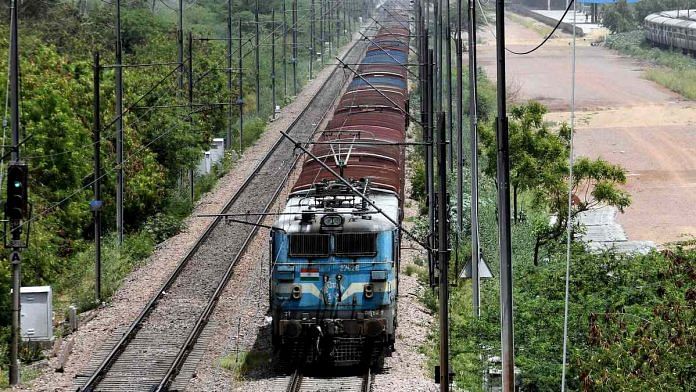New Delhi: In a rare felicitation of a civilian government servant, a Group ‘C’ officer of the Railways — who was closely involved in managing operations in the aftermath of the Pulwama attack in 2019 and the current India-China standoff — was awarded with the Chief of Army Staff Commendation Friday on the Army Day.
According to sources in the Railways, Amresh Kumar Choudhary, 50, is the head of the control room of the military wing of the Railways, which is known as ‘Mil Rail’.
In his capacity, Choudhary has been instrumental in the movement of troops, especially after the Pulwama attack and during the standoff between India and China in Ladakh.
“This is the first time a Group ‘C’ staff of the Railways has been awarded by the Army. In general, for the Army to award a civilian with this honour, the official concerned has to be extraordinary,” said an officer of the Railways.
“This is the top brass of the Army recognising the contribution of the Mil Rail… In the past, only one or two other officers of the Railways have been given such an award, but those were senior officers.”
ThePrint sent queries via WhatsApp to railway ministry spokesperson D.J. Narain regarding this special cell of the Railways, but there was no response until the time of publishing this report.
ThePrint could not contact Choudhary for a comment since Mil Rail is not authorised to speak to the media.
Also read: Railways drafts new rules for use of luxury saloon coaches by IRCTC for tourism
‘All military communication happens through this wing’
Explaining the functions of Mil Rail, the officer quoted above said it is a specialised wing of the Indian Railways, responsible for the movement of jawans, logistics and equipment, including tanks, for all the three armed forces during both peacetime and war or war-like situations.
“All the military communication happens through this wing, and not the Railway Board,” the officer said. “The wing is, in fact, situated in the Sena Bhawan, and not the Rail Bhawan.”
Another officer said the wing looks after the strategic movement for the defence forces. “It has a great role to play in strategic planning.”
The quick movement of men and material, in emergency cases like in Ladakh, happens by air, but the second tier and further deployment is done by rail, followed by roads.
Information about such trains carrying troops or equipment reaches the railway divisions concerned from the Mil Rail in the form of a code, which are subsequently deciphered by the cyber cell of the division.
Post-Pulwama operations
A joint secretary-rank officer of the Railway’s Traffic Service is posted at Raksha Bhawan, and it is under this officer that the rest of the Mil Rail staff function.
For example, even during the nationwide Covid-19 lockdown, when all passenger trains were suspended by the Indian Railways, the Army arranged for special trains to ferry hundreds of troops from different parts of the country across the Pakistan and China borders.
The military wing also ran multiple trains to get workers from Jharkhand and nearby places to Ladakh so the Border Road Organisation could continue building roads and other infrastructure during the standoff with China.
“There is a control room within the Mil Rail, which stays in constant touch with the ministries of defence, home and all the zonal railways,” the second officer said.
“Even during peacetime, they are on alert. But during warlike situations, the control room activity peaks. Everything has to remain secret since maintaining the secrecy around the movement of troops and equipment is of the highest priority,” he added.
For example, in the aftermath of the Pulwama attack, the cell had to ensure that information regarding movement of trains for transporting troops and heavy equipment such as tanks and artillery guns was strictly kept under wraps, the officer said.
“Special instructions had to be issued saying that there could be calls made in the name of or posing as a senior railway official, defence or intelligence official, and no information pertaining to the movement can be given under any circumstances,” he added.
Also read: All-powerful CEO, end to department culture — How Railways restructure will reshape it







Excellent, the person responsible got the coveted award.